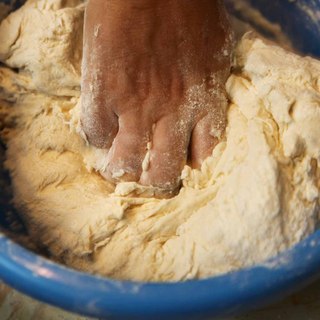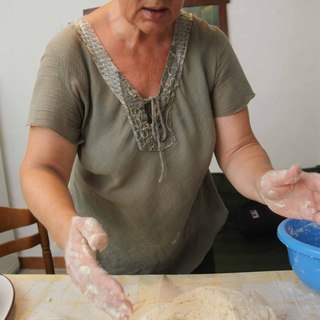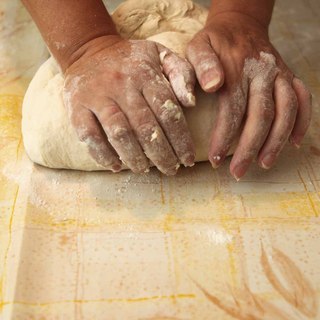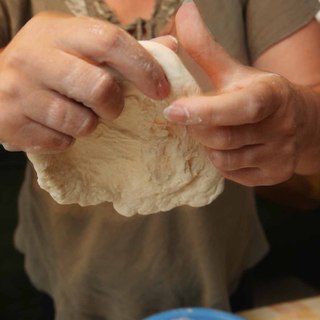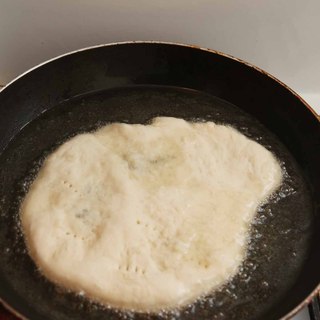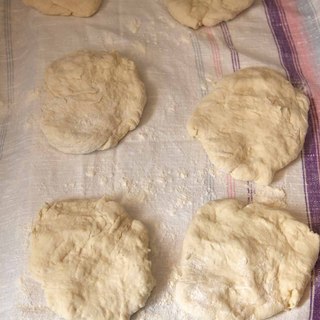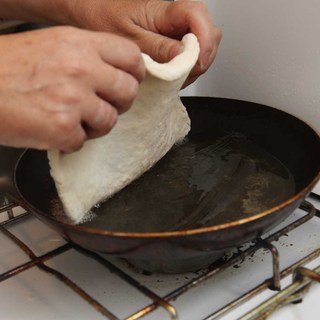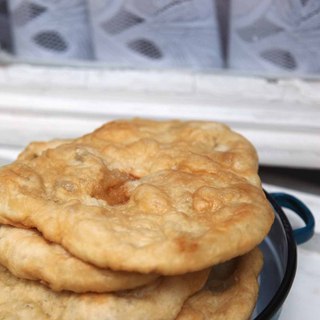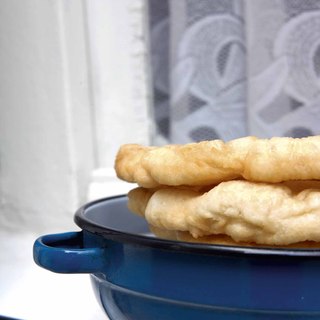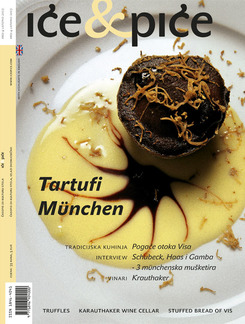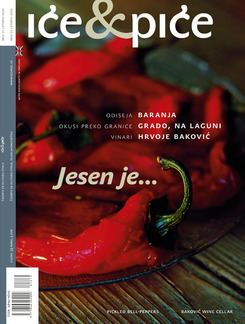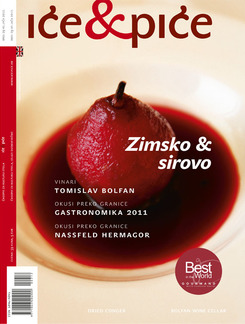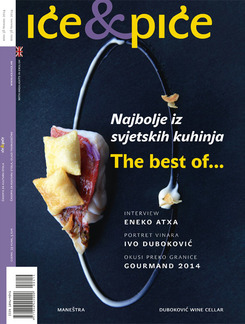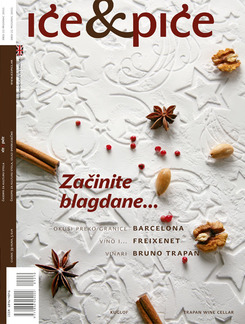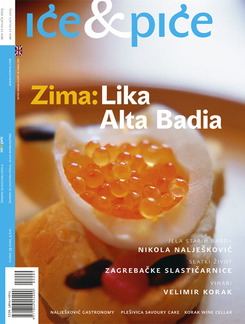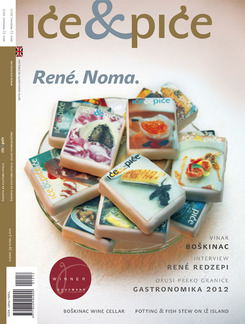Picipaj, pogača, pispalj, plaška, pogača, however they might be named, evoke memories of the fragrances of childhood all down the Adriatic coastline. Independently of whether it is to do with Pag or Šibenik or for instance Lopud.
There has been something of a craze in the cooking world of the last few years for the most utterly simple food of the common people, as if it is able, in close contact with the original and rudimentary and primordial being of life itself, by that mere fact to be the warrant of a healthy diet. This cult of the simple and healthy popular fare is along the lines of the observations of celebrated Italian travel writer Alberto Fortis who in his Journey Around Dalmatia of 1774 observed that the inhabitants of Dalmatinska Zagora, the mountains overlooking the coast, precisely thanks to their healthy food with moderation and a healthy life in the clean air long remain strong and vigorous. Observant Fortis remarked that this people is fondest of garlic and shallot, after the roasted meat that they are proud of; however, fresh cheese on butter is the best dish they are able to prepare for a guest in a hurry. In addition, the abbot remarks: They seldom serve bread baked in our way, but usually make flat cakes of millet, barley, maize, sorghum and wheat, even if they are wealthy; they bake these cakes day after day on the slabs of the fireplace.
From these lines it can be gathered that the famed travel writer had relished bread made under a baking bell, originally an invention of our prehistoric forebears in the area, the Illyrian Iapods, Liburnians and Delmats. We do not know what the compiler of the first Croatian dictionary, Faust Vrančić thought by the concept of pogača, but he considered it important enough to put the word in his Dictionary, in the section of words that the Hungarians had borrowed from the Croats. Faust’s uncle Antun, a great hedonist who relished the delicacies of his native area, does not mention in his manuscripts the prosaic flat bread, but then Faust’s protégé, Ivan Tomko Mrnavić, Šibenik writer and historian, tenderly sings of gathering a few sticks to bake for myself and the child a little flat bread.
This somewhat lengthy intro is meant to lead us into a version of the pogača, today a completely forgotten comestible, with an uncommon and opaque name, the pispalj in the Šibenik dialect and a pišpaj or even pišpalj, and elsewhere in Dalmatia a pecipala. In vain will you look in the learned etymological dictionaries for the origin of the word. Only the most recent encyclopaedic dictionary pithily but accurately informs us that the word is reg. culin. dough shaped into a flat cake and fried in oil.
But behind this literary definition of the pispalj is a whole world of ancient times of nostalgic scents and forgotten tastes. Above all, pispalj is shaped like a flatbread, but it is not that. The still famed Andrija Kacic Miosic, for a full ten years a teacher in the Šibenik Franciscan school, says that flat bread is not called bread but pogača, which means that pogača is a kind of bread unleavened and familiar. But pispalj is part of leavened (risen) bread dough that is formed into a thin pogača or smaller circular shape and then fried in very hot olive oil.
Pišpalj was thus fried as a treat, mainly for the pleasure of children, was eaten sprinkled with sugar or spread with jam, and could be consumed as a savoury with cheese. It was prepared at the time when the daily bread was being baked day after day on the hearth, which in these times in which items of mass consumption are readily available has completely vanished from our homes. When Šibenik poet Vinko Nikolić, who in his verses returned to the images of biblical simplicity in food (Today we lunched on corn mush / Savoured with oil and salt sardine), after a long expatriate period, wanted to eat pišpaj in his native town, few of the local women knew the meaning of the word.
Though forgotten as a food, in Šibenik at least pišpaj has transferred its semantic field to the slap or box around the ears, one strong enough to make the face red, like the hot oil in some old forgotten granny’s skillet in which it was proudly sizzled and blown.
Plaskas, my madeleines
Autumn twilight, cold and melancholy. The year is 1965.
I am coming back from school. I stride rapidly to get home, eat as soon as possible, to be able to watch Mendo and Slavica in peace. On the veranda the well known fragrance of freshly fried plaska awaits me. Perfect. Nothing better. I don’t have to sit down at the table and waste time bothering with cutlery. On each warm plaska mother’s going to spread me a thick layer of freshly prepared black grape jam, arrange them on a tray, and I shall take up my position on the couch in front of the tele and... sheer pleasure. Could there be a better supper?
Autumn twilight, cold and dreadful. The year is 1991.
I check out to see if the windows are well curtained so they shouldn’t accidentally let out some treacherous beam frin the pale light of the oil lamp. As if by the by, I cast a quick uncertain glance at the open sea. I don’t know if it is better to look or not to look. Never mind, I can’t do anything anyway, neither I nor anyone else of us on this little island, forgotten by all.
In the distance, three JNA ships. Seems that they are standing one by the other, bows pointing in the direction of Lopud. They’ll be aiming at Slano again tonight, then. Does that mean that this evening we are going to be spared a supper of shells served up gratis by the ships of the JNA? Suppose so.
OK, then I have to set about making supper. How many of us there will be, no knowing. One doesn’t know these days, for shielded by the veil of the dark, little boats from the coast arrive, people fleeing from the killers. Every evening there are several uninvited guests. Lucky that in the bakers, after the tourists left at the beginning of the season, there is enough flour and yeast remaining.
I put split logs into the stove and lift up the tea towel from the bowl at the edge of the stove. Check whether the dough for the plaskas has risen enough. It has. Now I shall heat up the oil and fry plaskas, and however many of us there are, we’ll share. I shan’t bake bread, I don’t have a wood burning oven, and if I had, it’s better like this, it goes further, as granny Kate would have said, you can feed people better.
The oil has heated, with an oiled soup spoon I pick out lumps of dough, pull them out in my palms and fry them in the pan. I have to make sure the oil doesn’t smoke, which would mean it’s burning, and then it’s no good, the plaskas would be charred outside and still raw within.
From the shelter in the ground floor my daughter comes in: “Mum, are those plaskas again for supper? Great, you can smell them all the way down. Pity that this year we shan’t have any grape jam.”
